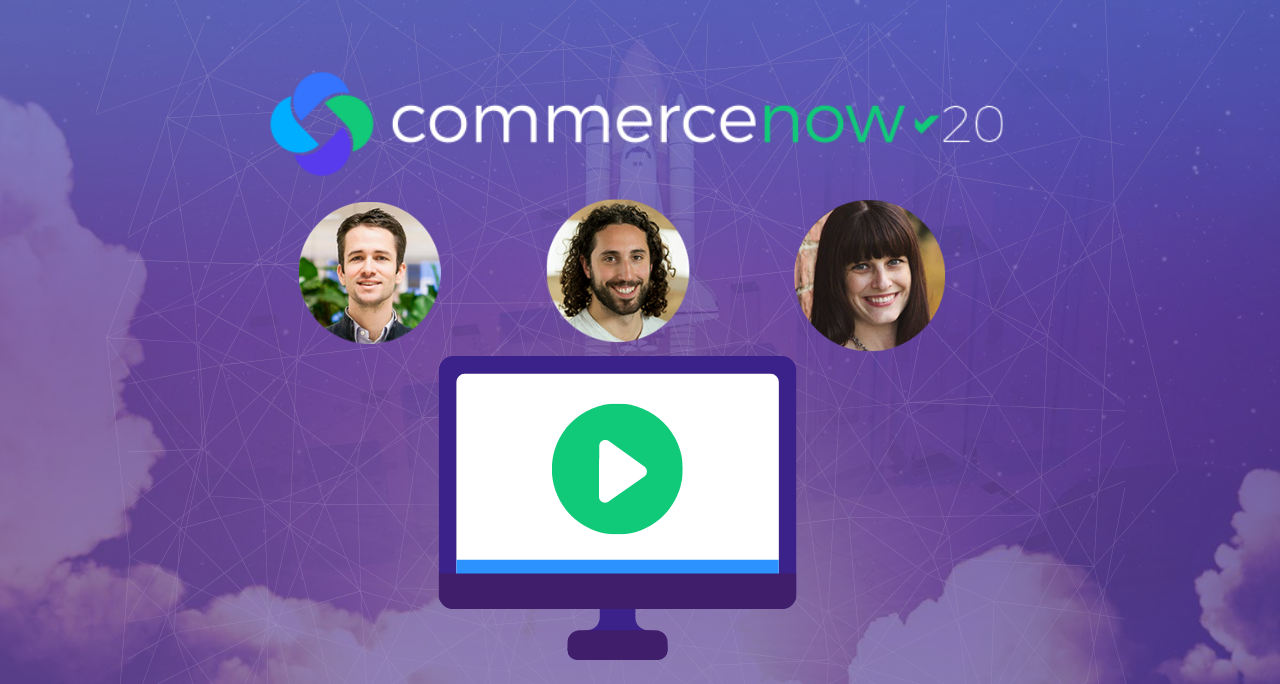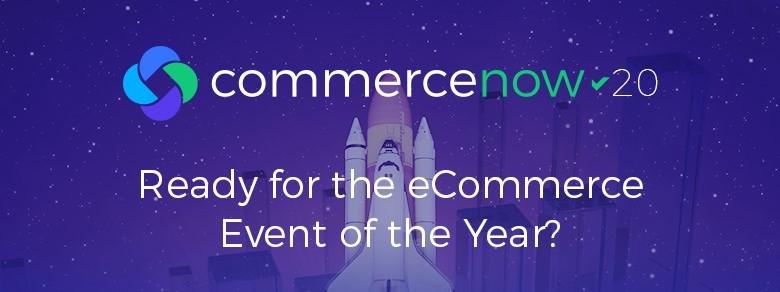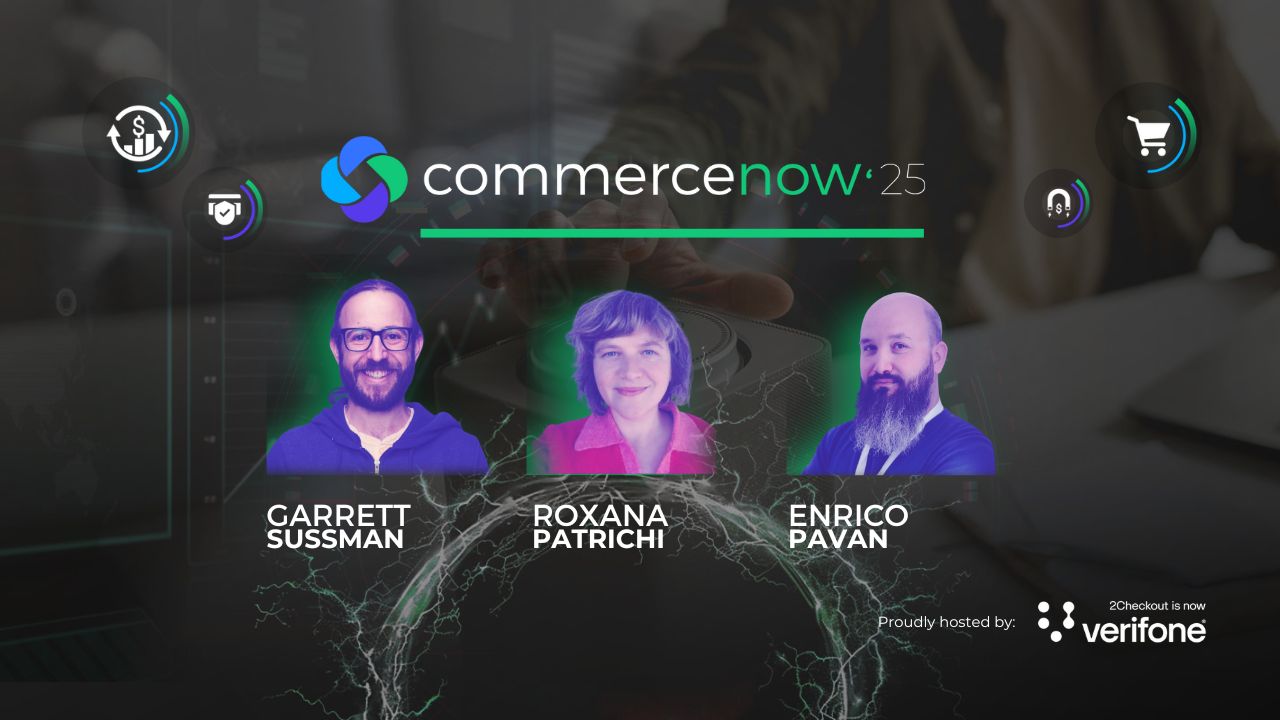Despite the turmoil brought about by COVID-19 this year, CommerceNow 2020 came off without a hitch for its fourth year this past June, and featured some of our best presentations to date. Topics covered included eCommerce, digital marketing, conversion rate optimization, customer retention, global payments, and more.
In this fourth and final blog post, we’ll share the key takeaways from three of the CommerceNOW ’20 presentations. You may also register to watch all of the recorded webcasts here.
These three presentations tapped into a wealth of tactics for eCommerce businesses, with take-home tips including:
- Build a product, not a feature; and “listen . . . sell . . . then market.”
- Use growth design to build your product quickly, learn along the way, manage risk, and tie user value to business goals.
- Intentional customer marketing is key to a business’ growth strategy, and the focus should be as much on keeping customers as on acquiring new ones. Building your CMK team is an essential piece of this strategy.
Creating value for your customers, through content, features, and conversation, is the fundamental secret to a successful relationship with them, said Jeroen Corthout, Co-Founder, Salesflare, in his presentation “How to Make Your Customers Fall in Love With You—7 Simple Secrets to a Better Product and More Sales.”
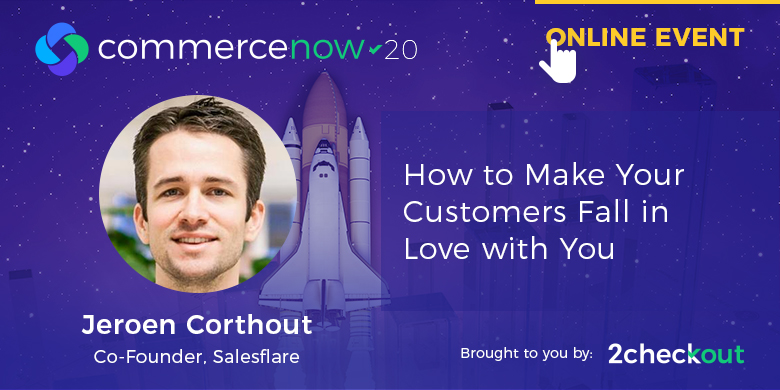
Jeroen shared his strategies for developing a successful product and achieving optimal sales:
- Find a problem you’re passionate about. “Don’t fall in love with your solution,” Jeroen emphasized. Build a product, not a feature. Choose fundamental challenges that are universal and ongoing, and make your solution evolve over time and context.
- Don’t work for people you don’t like or understand. Solve a problem for people you can relate to, in a market you understand and are interested in, with like-minded folks.
- Keep your customers as close as possible, and “don’t act like a big company.” Use things like support chat, LinkedIn, Facebook, conferences, and advice groups to offer personal care. Know your customers’ problems.
- Don’t skip steps in the process. Don’t start marketing at scale when you haven’t even sold your product yet. Listen to what your customers want, sell it to them successfully, and then focus on marketing.
- Automate robotic tasks you’ve already finessed; streamline your processes. That way you can keep your focus on your customers.
- Concentrate your energy on your core and outsource the rest. “There’s an app/framework/person for that,” Jeroen said. “Don’t waste time on things that don’t move the needle.”
- Continue to monitor and measure how you’re doing. Keep in close contact with internal colleagues, encourage open communication of problems or issues, and keep track of customer feedback.
“To win as a small company, you need to consistently listen better, learn quicker, and move faster,” Jeroen said. “Everything you do should be geared towards creating value for your customer.”
In his presentation “Design Strategies to Grow Products Successfully,” Paolo Ertreo, Product Designer for Dropbox introduced us to the concept of “growth design,” shared his four-step framework for designing for growth, and explained how to apply it to your business.
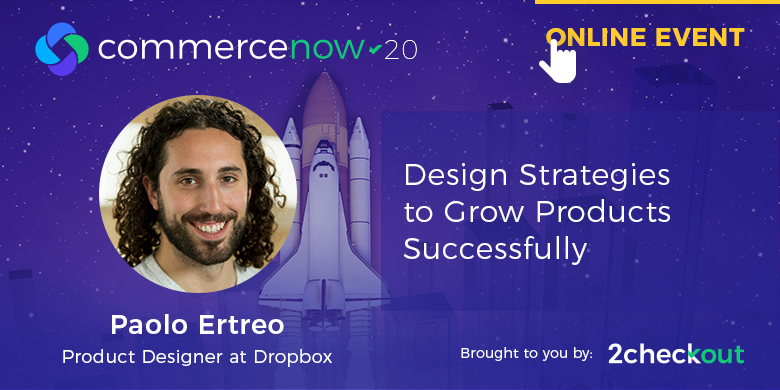
Growth design, Paolo explained, is an empirical way of designing products characterized by iteration and experimentation, with a lot of observation involved. Why is this important?
Paolo explained, saying it allows you to do the following:
- Build your product quickly
- Learn along the way
- Manage risk and correct your course early when needed
- Tie user value to business goals
So how does a business design for growth? Paolo shared his four-step framework for success.
- Define your North Star. This is your intended outcome, and from a design perspective is key because all your decisions should be directly tied to this. How to get there? Paolo says thoughtful and measurable experimentation is the answer.
- Form your POV and hypotheses. Use the “Known Knowns” matrix, commonly employed by designer and product people. It has four quadrants:
- Existing data and research
- “Unknown unknowns”
- Context (which turns unknowns into things you know)
- Experimentation
Paolo proposed a timeline for this process, and emphasized that it can and should be repeated:
- Step 1: Define what you know with existing data; look for patterns and form a strong POV
- Step 2: Define what you want to learn in order to come up with a testable hypothesis (if this, then that)
- Step 3: Define how to you want to learn; try designs that either validate or invalidate the hypothesis.
- Step 4: Launch your experiments in order to learn and ultimately impact metrics.
- Explore and validate. Use cost-effective experiments to see if there is opportunity. Paolo explains what to keep in mind during this phase:
- Speak to users and develop a prototype without overinvesting
- Focus on high-traffic surfaces and flows
- Work with one platform
- Focus on one language or geo
- Use existing components—don’t reinvent the wheel
- Copy is the interface—would it stand alone without colors, images, etc.? If yes, that’s good.
After doing this, Paolo said you can move to the expansion phase, with greater investment, keeping the following in mind:
- Address edge cases
- Bring in platform parity and remember that performance differs among them
- Localize by bringing in other languages or geos
- Build new patterns and paradigms
- Polish your visuals, etc.
- Build a more thoughtful experiments roadmap. Making substantial growth means not just experimenting either on a basic level or at a more momentous level—a mix of smaller experiments with more rigorous investments in experimentation will lead to success.
Paolo concluded his presentation on growth design by sharing an interesting, detailed example of how this four-step framework has been successfully applied, with Strava, a running and cycling app that connects athletes through their sports activities.
Tara Robertson, Head of Customer Marketing for Sprout Social, shared her “Five Customer Marketing Strategies Guaranteed to Grow Your Business,” and opened her presentation by emphasizing the importance of intentional marketing in a business’ growth strategy.
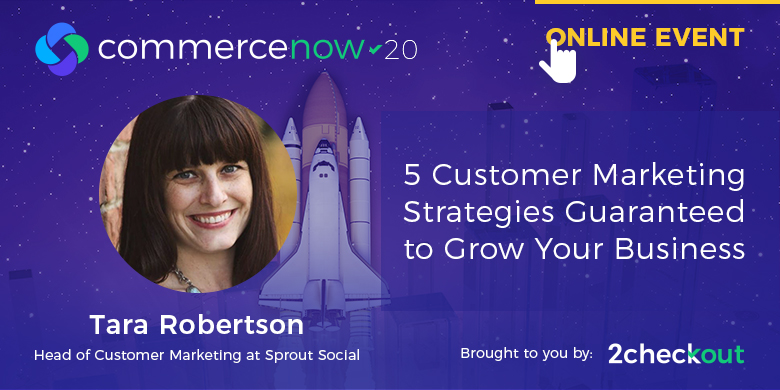
“Acquiring a new customer can cost five times more than retaining an existing one, so being focused on marketing [for both] is key to unlocking growth for your business,” she said. She presented her five strategies:
- Great customer service knowledge is as important as product knowledge. Understanding customer data from research is essential, Tara explained, yet 65% of marketers are not using it. She provided a template for a customer journey map that would provide qualitative insights. It should include interviews, surveys, mining data, and social listening.
- Invest in your team and prioritize relentlessly. Build your CMK team around customer service, onboarding/acquisition, and growth; let clear metrics and goals for these three areas influence this process.
- Segmentation is critical to building communications that will convert. Consumer expectations have changed and personalization is key. Your marketing team should build out the communications process for various departments. Here are some segmentation approaches she shared:
- Jobs to be Done (JTBD): best for product led
- Buyer personas: best for marketing led
- Ideal Customer Profile (ICP): best for sales led
- Educate your customers. Research shows, Tara pointed out, that only around 60% of available features of a product are used. It’s important to educate your customers to use your product to its potential, but it doesn’t have to be complicated to put in place. Tara shared some easy ways:
- Live training (marketing led)
- Self-guided (customer led)
- Community (marketing and customer led)
- Product tours (product led)
- Treat every customer as a VIP. Build experiences that make your customers feel they are important, and that their needs are paramount in order to build loyalty. Personalized responses lead to dramatically higher conversion rates. “We thrive on personal, meaningful connections,” Tara said. “And we want that with our products.”
To sum up, it takes a customer-focused approach enhanced with personalization to meet the rising expectations of modern customers. This is the sure way to go in 2020 and beyond.
To learn more about the trends, insights, and tips and tricks that some of the greatest minds in eCommerce, digital marketing, CRO, and customer experience shared at CommerceNOW 2020, you can sign up here to access all the sessions.

